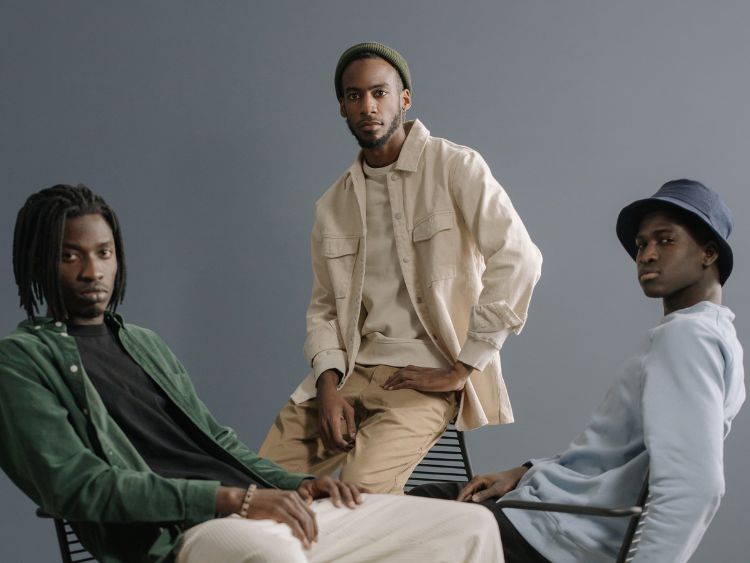The 1970s was a transformative decade in the world of fashion. From the hippie movement that spilled over from the late ’60s to the birth of disco and punk, the fashion of the ‘70s was all about self-expression, breaking the rules, and living boldly. Let’s dive into the colorful, eclectic world of 1970s fashion, a time when freedom of choice in style truly became the norm.
The Cultural Context Behind 1970s Fashion
The 1970s were a period of great social change. Wars, protests, and movements for equality shaped the mindset of the people, and naturally, their wardrobes followed. While the civil rights and feminist movements were in full swing, fashion became a way to make a statement. The era’s fashion gave birth to looks that reflected individualism, rebellion, and non-conformity.
Bell Bottoms: The Iconic Pants of the Decade
When you think of 1970s fashion, the first image that probably comes to mind is bell-bottoms. These wide-legged pants became synonymous with the decade, and you could find them in every fabric from denim to corduroy. Whether you were heading to a rock concert or just strutting down the street, bell-bottoms were a must.
- Who wore them? Bell-bottoms were for everyone—men, women, rock stars, and regular folks alike.
- How to style them? They were often paired with tight turtlenecks, fringed vests, and platform shoes for that extra height and swagger.
Hippie Influence: Peace, Love, and Fashion
The early part of the ‘70s still carried the hippie vibe from the previous decade. Bohemian styles flourished, characterized by flowing skirts, peasant blouses, and natural fabrics. Tie-dye, fringe, and floral prints dominated, often accompanied by earthy accessories like leather belts, headbands, and peace sign jewelry.
- Fabrics and colors: Cotton, suede, and crochet were popular materials, while earthy tones like browns, oranges, and greens were in vogue.
- Maxi dresses: Long, flowing maxi dresses became a symbol of the relaxed, free-spirited ethos that defined the hippie aesthetic.
Disco Fever: Glam, Glitz, and Glitter
As the decade wore on, fashion shifted from the easygoing boho styles to something far more glamorous—disco! The disco scene influenced a whole new look, filled with shiny fabrics, sequins, and bold colors. People flocked to nightclubs like Studio 54 to dance the night away, and their outfits had to keep up with the bright lights and pulsating music.
- Jumpsuits: One-piece jumpsuits were a disco staple. They were easy to move in and, of course, they looked incredibly cool under the club lights.
- Metallic fabrics: Golds, silvers, and anything that sparkled was the go-to look. Shiny fabrics, from lamé to satin, were the norm for disco fashionistas.
- Platform shoes: A holdover from the early part of the decade, platform shoes remained a popular choice, making sure dancers stood out—literally.
Punk Rock Rebellion: Fashion as Protest
While disco dominated the mainstream, an underground movement was brewing. Punk rock, with its DIY ethos, anti-establishment attitude, and aggressive sound, gave birth to its own style. Leather jackets, ripped jeans, safety pins, and band tees became the uniform for punks. Unlike the glitz of disco, punk fashion was about rebellion, standing out by rejecting the norms.
- Key pieces: The punk uniform typically included a leather jacket, band T-shirts, and studded accessories.
- DIY Fashion: Many punks made their own clothes, intentionally distressing or altering them to show their opposition to consumerism and societal expectations.
The Evolution of Women’s Fashion in the 1970s
Women’s fashion in the 1970s saw the merging of several distinct styles. In the early part of the decade, flowing, relaxed styles were popular thanks to the bohemian influence. But as the years progressed, women embraced bolder, more structured pieces.
Power Dressing: The Rise of the Pantsuit
One of the biggest changes in 1970s fashion was the growing acceptance of women wearing pants in professional settings. The ‘70s saw the rise of the pantsuit, thanks to designers like Yves Saint Laurent. This shift was not only about fashion but also a reflection of the changing roles of women in society as they entered the workforce in greater numbers.
- Colors and styles: Bright colors, wide lapels, and flared trousers made these suits stand out.
- How it made a statement: Women wearing pantsuits was a symbol of empowerment, challenging the traditional norms of femininity.
Mini, Midi, and Maxi: The Hemline Debate
The 1970s was unique because women had the freedom to choose from mini, midi, or maxi skirts, depending on their style. Whether you were feeling flirty in a mini skirt, casual in a midi, or embracing your inner flower child with a floor-length maxi, the decade’s fashion gave women the liberty to express themselves however they pleased.
Accessories: The Cherry on Top
No 1970s fashion look was complete without the right accessories. Hats, scarves, and oversized sunglasses were some of the defining accessories of the time.
- Wide-brimmed hats: These were especially popular during the summer, often paired with flowing maxi dresses.
- Sunglasses: Oversized, round sunglasses added a touch of mystery and glamour to any outfit.
The Impact of 1970s Fashion on Today’s Trends
It’s clear that the influence of 1970s fashion didn’t end with the decade. Many of today’s most popular styles find their roots in the ‘70s, from flared jeans making a comeback to the continuous popularity of bohemian-inspired looks.
- Boho chic: Stars like Vanessa Hudgens and the Olsen twins have brought back bohemian style with a modern twist, showing that ‘70s fashion still holds a firm place in today’s world.
- Platform shoes: While platforms may not reach the towering heights they did in the ‘70s, this trend is far from dead. Designers continue to reinvent the platform for a new generation.
FAQs about 1970s Fashion
What was the most iconic trend of 1970s fashion?
Bell-bottoms were perhaps the most recognizable trend of the decade. Worn by both men and women, these wide-legged pants perfectly encapsulate the carefree, bold style of the era.
How did music influence 1970s fashion?
Music played a huge role in shaping the fashion of the 1970s. The hippie movement, disco, and punk all had distinct styles that reflected the spirit of the music scenes they were associated with.
Why was 1970s fashion so diverse?
The 1970s was a time of social upheaval and change, and fashion became a form of self-expression. As people began to reject traditional norms, they started to embrace a wide variety of styles, leading to an incredibly diverse fashion scene.
Is 1970s fashion still popular today?
Absolutely! Many designers continue to draw inspiration from the 1970s, and you can see elements of ‘70s fashion in everything from festival attire to everyday streetwear.
Conclusion: The Lasting Legacy of 1970s Fashion
The bold, diverse, and free-spirited nature of 1970s fashion has left a lasting legacy on the fashion world. Whether it’s through the laid-back bohemian styles that persist in today’s festival fashion or the glam and glitz of disco that still inspires red-carpet looks, the ‘70s continues to influence how we dress. It was a decade of self-expression, rebellion, and freedom, and that spirit still lives on in fashion today.
Authoritative Links:
- https://www.vogue.com/article/1970s-fashion-trends
- https://www.theguardian.com/fashion/1970s-fashion







